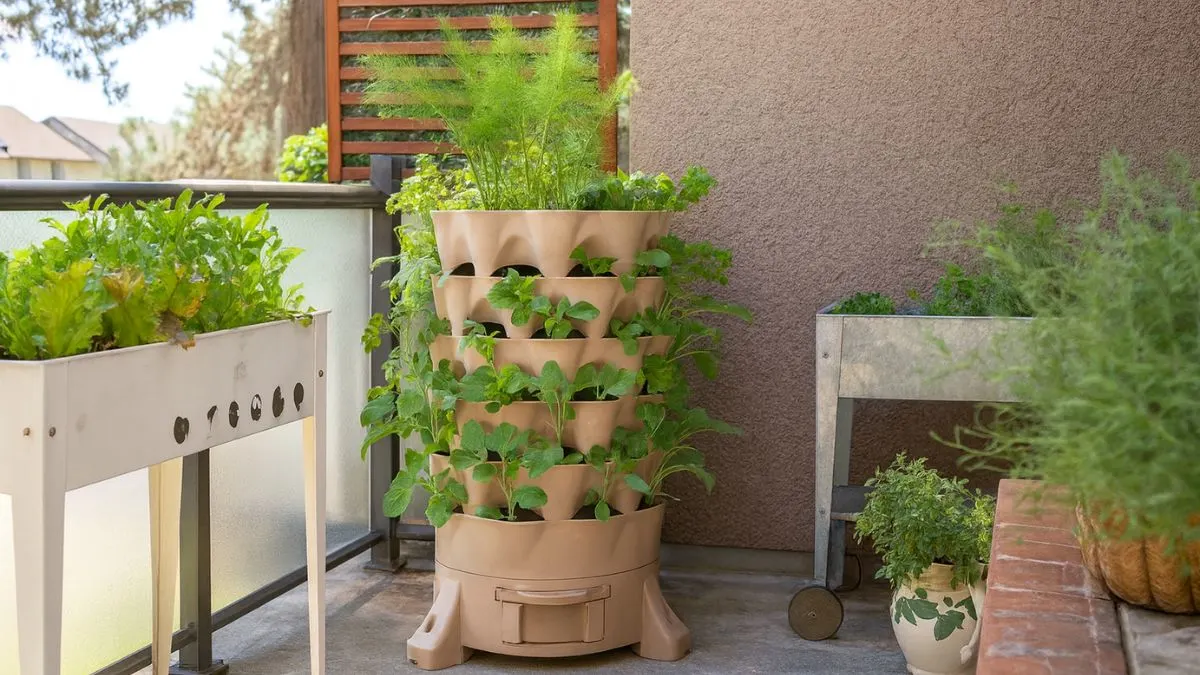The monsoon brings with it fresh air, a soothing rhythm, and endless possibilities for gardeners. It’s the season when plants thrive the most, yet many urban dwellers feel restricted by limited balcony or backyard space. That’s where vertical gardening in the monsoon comes in—a clever way to transform walls, fences, and even small corners into lush green displays.
Having lived in a compact apartment in Mumbai during one rainy season, I personally experienced how setting up a vertical garden lifted my space and mood. With just a wall-mounted rack and a few planters, I created a blooming, edible paradise.
What is Vertical Gardening?

At its core, vertical gardening allows you to maximize limited horizontal space by growing plants on walls, fences, or other vertical structures. Instead of spreading outwards, your plants grow upwards, making the most of every inch.
This style of gardening isn’t just about aesthetics—it’s about practicality. You can grow more food in less space while enjoying greenery year-round.
Benefits of Vertical Gardening During Monsoon
- Abundant Growth
The rains bring natural moisture and humidity that support fast plant growth. Vertical gardens soak up this advantage beautifully.
- Space Efficiency
By simply choosing to install a metal frame or wall shelves and pile smaller plastic flower planters vertically, you instantly expand your planting area without taking up precious floor space.
- Cleaner Environment
Vertical gardens can act as a natural air filter, improving air quality around your home.
- Reduced Water Stress
The monsoon ensures you don’t need to water often, lowering maintenance while plants flourish.
Also Read: The Fascinating Role of Plant Shoots in Growth
How to Set Up a Vertical Garden in Monsoon
Step 1: Choose the Right Spot
Select a wall, balcony railing, or fence that receives partial to full sunlight. Rain should reach your plants without flooding them.
Step 2: Frame Installation
For durability, install a metal frame or wall shelves. Metal is rust-resistant when properly treated and offers strong support for multiple planters.
Step 3: Planters and Soil
Use lightweight, smaller plastic flower planters vertically stacked. Fill them with rich, well-draining soil to prevent waterlogging.
Step 4: Plant Selection
Choose plants suited for monsoon conditions:
- Herbs like mint, basil, and coriander.
- Vegetables such as spinach, lettuce, and tomatoes.
- Flowers like marigolds and petunias that brighten rainy days.
Best Plants for Vertical Monsoon Gardens
- Herbs: Herbs like coriander and basil love moisture and grow quickly in vertical planters. You’ll always have fresh seasoning at hand.
- Leafy Greens: Spinach and lettuce flourish in the monsoon, giving you nutrient-rich produce in a compact setup.
- Ornamentals: Marigolds are especially rewarding—adding bright color while keeping pests away.
Plant Type |
Why It’s Ideal for Monsoon Vertical Garden |
Herbs |
Fast growth, minimal care, daily kitchen use |
Leafy Greens |
Moisture-loving, quick harvests |
Flowers |
Aesthetic appeal + natural pest control |
Personal Experience with Vertical Gardening
During one rainy season, I experimented with stacking planters in my small Canadian balcony. To my surprise, coriander sprouted within a week, marigolds thrived, and even a small tomato plant began climbing the frame. It proved how anyone, even with zero yard space, can maximise the greenery even in limited space and enjoy the therapeutic effect of gardening.
Also Read: 5 High-Profit Vegetables Farmers Should Start Growing in 2025
Tips for Maintaining Your Monsoon Vertical Garden
- Drainage is key – Always ensure excess rainwater can escape.
- Check for pests – Moist environments can attract bugs, so monitor regularly.
- Fertilize lightly – Rain tends to wash away nutrients, so feed your plants every few weeks.
- Secure structures – Strong winds often accompany rains; reinforce your frames.
Common Mistakes to Avoid
- Using heavy ceramic pots that strain your vertical frame.
- Overcrowding plants, which leads to competition for light and nutrients.
- Neglecting pruning, which results in messy and unhealthy growth.
Conclusion
Vertical gardening in the monsoon is more than a trend—it’s a lifestyle choice that allows urban gardeners to bring nature closer. By choosing to install a metal frame or wall shelves and pile smaller plastic flower planters vertically, you can grow more food in less space while enhancing your home’s beauty.
No matter where you live—in Canada, the USA, or across the globe—this method makes it easy to maximise the greenery even in limited space. Start small, nurture your plants, and let the monsoon rains do their magic.






